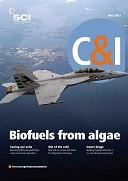A compound found in the bark of an African bush may hold clues to the development of drugs for reversing a host of addictive behaviours from drug and alcohol abuse and even smoking and compulsive over-eating, scientists reported at the BIO convention in Chicago, US, in April 2013. The compound 18-MC under development by California-based biotech company Savant HWP has a unique mode of action by targeting the brain mechanism underlying all forms of addiction – the extreme fluctuations of the neurotransmitter dopamine that lead to drug or other obsessive craving, said Savant ceo Stephen Hurst. And it also extinguishes cue-related cravings, suggesting that it may be able to prevent relapses long term, he added.
18-MC is a synthetic small molecule with the anti-addiction properties of the plant-derived compound ibogaine, but without its hallucinogenic and cardiotoxic properties, the company claims. Its mode of action is completely different from current anti-addiction medications, which are substance specific and target the binding of specific addictive substances to their receptor proteins. Studies with the compound in ‘addicted’ rats have found that it reduced the ‘self administration’ of opioids, cocaine, nicotine, alcohol and sugary/fatty foods by up to 99%, according to Hurst. It is also orally active at low doses of 40mg/kg and with a half-life of around 12 hours, indicating that a once-daily pill may be effective, he added.
‘Addiction costs the US more than half a trillion dollars every year. More significantly, it is responsible for one in four deaths,’ Hurst said. ‘This is the only drug that hits the central mechanism of addiction and significantly alters environmental cues of addiction to prevent reinstatement of behaviour,’ said Hurst.
Savant plans to begin human clinical safety studies in Brazil imminently, where the drug will also be investigated as a treatment for the parasitic disease leshmaniasis. Proof of concept trials as an anti-addiction therapy for cocaine and opiates in people are expected to begin in the US in late 2014/early 2015.
There are no existing treatments for cocaine or methamphetamine addiction. A recent analysis by the US National Institute on Drug Abuse (NIDA) estimates the market size for first in class treatment for cocaine addiction at $1.2bn. Even for smoking addiction, where several drugs are approved, current therapies have a one year abstinence rate of only about 20%, compared with 10% for placebo, the company points out.
Savant is not the only company interested in the anti-addiction properties of molecules that regulate dopamine; Hurst pointed out that another competitor company, Demerx, also has a ibogaine metabolite currently in clinical trials.





